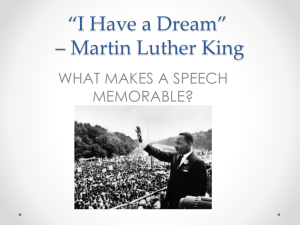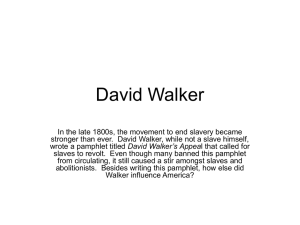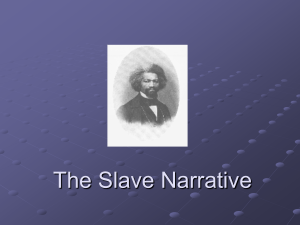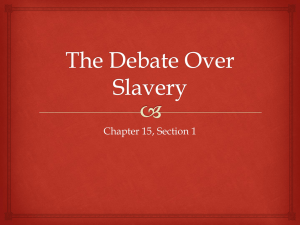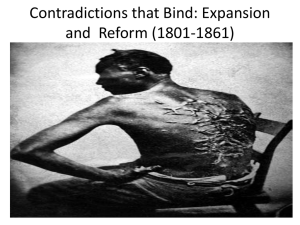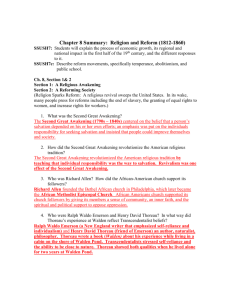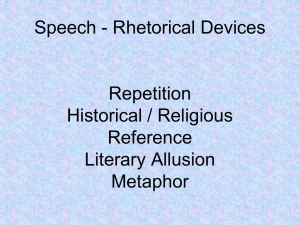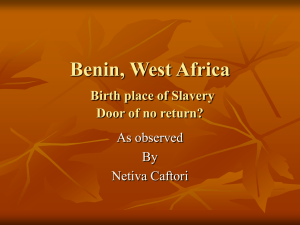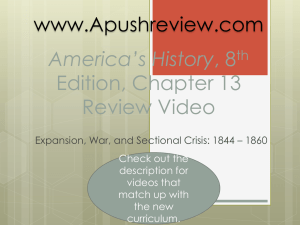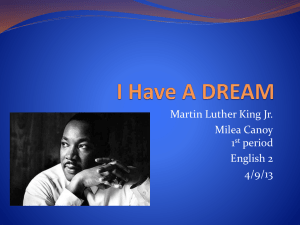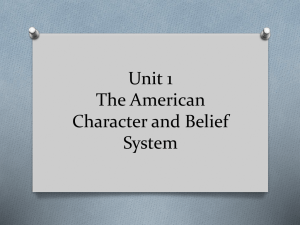The Right to Life: what can the White Man*
advertisement
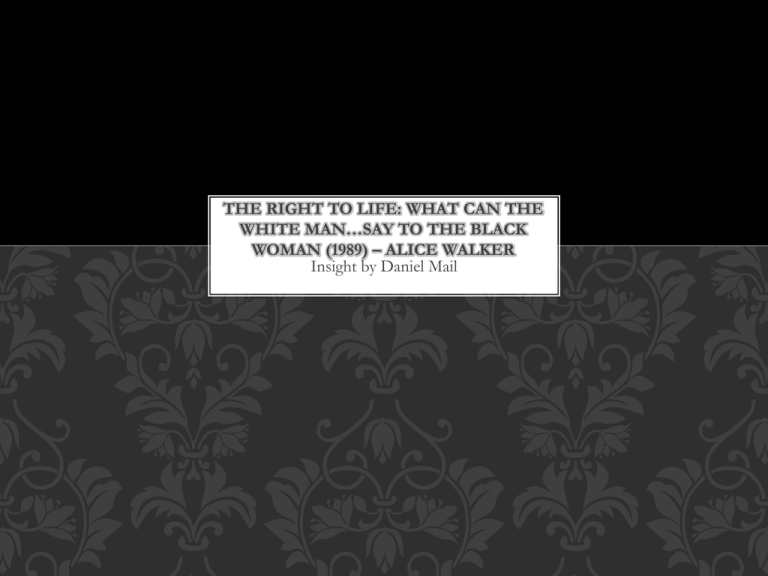
THE RIGHT TO LIFE: WHAT CAN THE WHITE MAN…SAY TO THE BLACK WOMAN (1989) – ALICE WALKER Insight by Daniel Mail NATIVE AMERICANS Native Americans are an indigenous people. Early evidence showing indigenous people to inhabit North America indicates they migrated there over 11,000 years ago, which was followed by several large waves of migration e.g. groups from Asia and South America. Native Americans led peaceful lives up to the 15 th century, following the arrival of Europeans. The horses they brought over spread disease among the natives, who had no immunity to these diseases and therefore suffered several losses from measles, chicken pox etc. NATIVE AMERICANS The Europeans also made it their territory, taking over the land and building farms and homes for themselves Before the European invasion, Native Americans were very populous, whereas now, only 1.4% of US citizens are thought to be Native Americans. Those who claim to be natives are mostly located in designated Indian reservations Today, the Native American symbols are used as mascots in several national sports, which has stirred controversy. BLACK HISTORY Most African Americans are the descendants of Africans who were held captive in the United States from 1619 up to 1865. In the past they were referred to and selfidentified collectively as the American Negro. 1746 – Lucy Terry, an enslaved person, becomes the earliest known black American poet, her poem, Bar’s Fight, wasn’t published until 1855. 1773 – Phillis Wheatley becomes the first African American to publish a book. Poems on Various Subjects, Religious and Moral 1787 – slavery is illegalised in the Northwest Territory while Congress is forbidden from banning it until 1808. 1793 – a federal fugitive slave law is enacted, providing for return slaves who escaped. 1808 – Congress finally bans slave importation from Africa 1820 – Missouri Compromise bans slavery north of its southern boundary 1831 – Nat Turner leads most significant slave uprising in American history BLACK HISTORY 1857 - The Dred Scott case holds that Congress has no right to ban slavery in states and that slaves are not citizens. 1865 – The Civil War ends, and slavery effectively ends when they receive the news of the Civil War. The Ku Klux Klan is formed in Tennessee 1892 - Prominent black Missourians declared a national day of prayer and fasting in response to nationwide lynching violence; 1500 gathered in St. Louis (May 31). 1948 - Truman "It is hereby declared to be the policy of the President that there shall be equality of treatment and opportunity for all persons in the armed services without regard to race, color, religion, or national origin.“ 1963 – Martin Luther King delivers his famous “I Have A Dream” speech 1965- Malcolm X, black nationalist and founder of the Organization of AfroAmerican Unity, is assassinated 2009 – Barack Obama, first African American president MARTIN LUTHER KING ORATORY In his speeches, he used several rhetorical and oratorical devices such as alliteration, repetition and the rule of three Alliteration: “..in whose symbolic shadow we stand today...” “dark and desolate” “dignity and discipline” “marvellous new militancy” Repetition: “One hundred years later” “Now is the time” “We can never be satisfied as long as...” “go back” “I have a dream” Rule of three: “insult, injustice and exploitation” “justice, good and brotherhood” STYLE OF WRITING •The title of the speech is frequently mentioned throughout as a rhetorical question. •There are multiple references to the unnamed “white man” e.g. “We see him lined up on Saturday nights” “He has not cared for a single one of the dark children in his midst” •The author lists several tribes and races that have become endangered due to the effects of racial attacks “Where are the children of the Blackfoot? Gone.” “Of the Cheyenne? Of the Chippewa? Of the Iroquis?” Etc. •As the speech progresses, Walker begins to speak directly to the “white man” ... “From the beginning, you have treated all dark children with absolute hatred” but also speaks to the black woman as the white man, therefore answering the question that the poem’s title poses SIMILARITIES / DIFFERENCES WITH “I HAVE A DREAM” •Use of repetition in the speech’s title •Variations on particular phrases used throughout e.g. “You shove” “you string” and “Let us be clear” “let it be remembered” •Whereas I Have A Dream concerned just race, The Right To Life covers gender as well •Speaks directly to those victimising her race/gender. Martin Luther King addresses those who are listening, encouraging them to support his cause RE-CASTING TASK Imagine you are a stereotypical “white man” reinforcing the type of world created by his race mentioned in the poem. Write a response to Alice Walker’s speech using the extract from “We do not forget the forced sterilizations...” to “...is a testament to his injury.” Consider: The attitude he will take towards the things said by Walker about the devastation caused by the white man Using any appropriate stylistic speech features.
